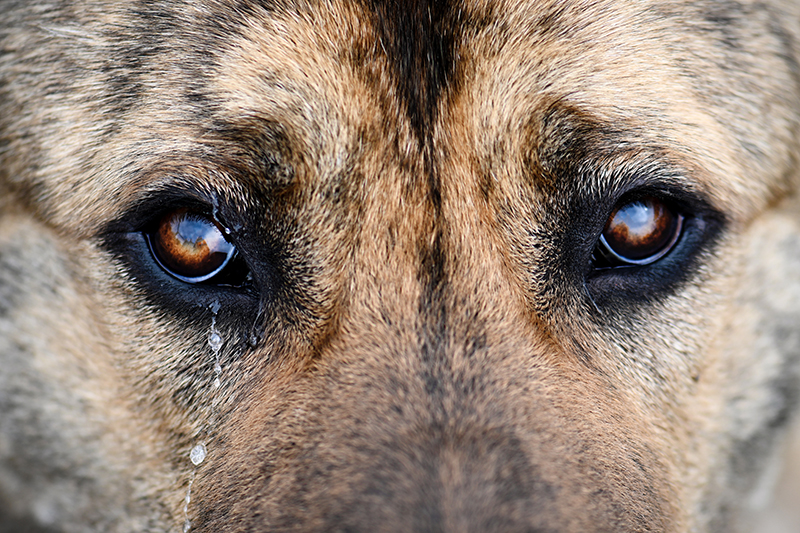Table of Contents
If you’ve ever looked down at your pup and noticed watery eyes or tear stains on their cheeks, you’re not alone. Occasional tearing is totally normal in dogs, but excessive eye watering—especially when it’s chronic or one-sided—can signal an underlying issue that shouldn’t be ignored.
As professional groomers, we often spot signs of eye discomfort early, which is why it’s important for pet parents to know what’s normal, what’s not, and when it’s time to call the vet. In this blog, we’ll explore the most common reasons your dog’s eyes may be watering, including medical conditions, breed-related traits and environmental factors.
What’s Normal vs. What’s Not?
A dog’s eyes naturally produce a small amount of tears to keep them clean and moisturized. Occasional watering can happen from excitement, yawning or mild wind exposure. But if you’re noticing constant wetness, staining or signs of discomfort—like redness, squinting or pawing at the eyes—it could be something more serious.
Look out for:
- Thick, yellow or green discharge
- Clear mucus that persists
- Swelling around the eyes
- Unusual odor
- Keeping one eye closed or blinking excessively
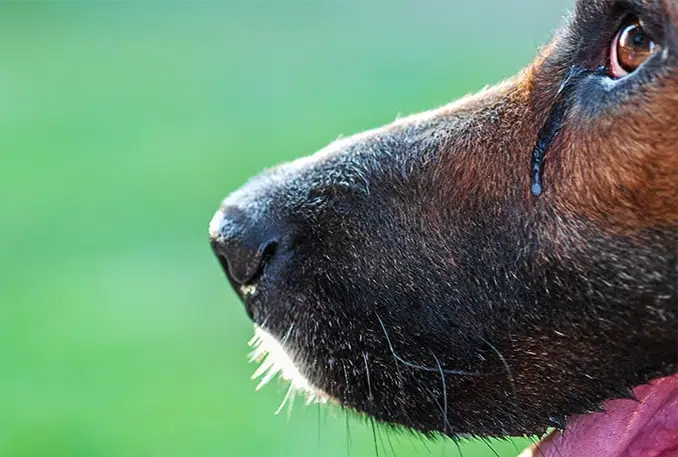
Common Causes of Watery Eyes in Dogs
Environmental Irritants
Dogs can react to dust, grooming sprays, perfumes or even strong wind exposure. These can cause temporary irritation and watery eyes. If your dog’s environment changes suddenly or they’re frequently in dusty or windy areas, that could be the culprit.
Allergies
Just like us, dogs can have seasonal or environmental allergies. These can cause redness, clear discharge and watery eyes. In some cases, dogs may rub their faces or develop mild skin irritation as well.
Eye Infections
If your dog’s eyes are producing thick discharge with a noticeable odor, they may have an eye infection. Infections caused by bacteria can lead to swelling, redness, or squinting, and may worsen quickly if not treated.

Foreign Bodies & Eye Injuries
Sometimes a dog can get a foreign body like a piece of grass or dust in the eye, leading to discomfort and excessive tearing. If your dog is suddenly squinting, holding an eye closed, or pawing at their face, it could be an eye injury or even a corneal ulcer, which is an open sore on the surface of the eye.
Blocked Tear Ducts (Epiphora)
When tear ducts are blocked—sometimes called a plugged nasolacrimal duct—tears spill over onto the face instead of draining properly. This is known as epiphora, and it’s especially common in small breeds. Persistent moisture often leads to staining or irritation under the eyes.
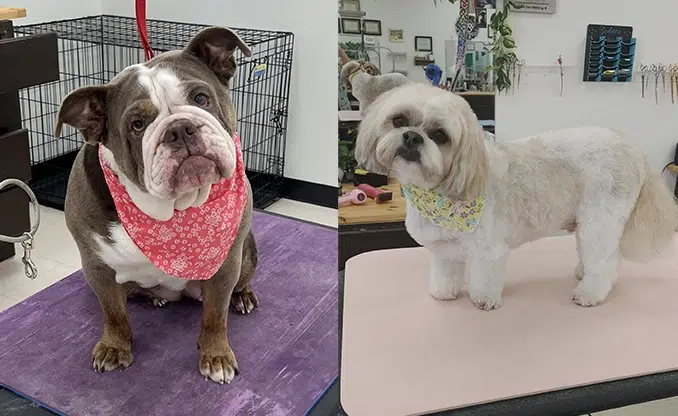
Eyelid & Eyelash Issues
Certain dogs are born with anatomical abnormalities that cause eyelids or eyelashes to grow in ways that irritate the eye:
- Entropion, when the eyelid rolls inward
- Distichiasis, where extra lashes grow in the wrong places
- General eyelid issues that disrupt normal tear drainage
These conditions can cause watery eyes, blinking or squinting, and increase the risk of ulcers or infections.
Dry Eye (Keratoconjunctivitis Sicca)
Keratoconjunctivitis sicca, or dry eye, is a condition where the eye doesn’t produce enough high-quality tears. This can result in irritation, clear mucus, and sometimes watery overflow as the body tries to compensate. Treatment often involves artificial tears or medicated drops from your vet.
Glaucoma
Glaucoma causes a dangerous buildup of pressure inside the eye. Symptoms include cloudiness, excessive tearing, eye bulging or keeping an eye closed due to pain. This is a medical emergency that requires immediate care.
Eye Lumps & Tumors
Unusual eye lumps or growths can block tear drainage or irritate the surface of the eye. In rare cases, a corneal tumor could also interfere with normal tear function. Any new growths should be evaluated by a veterinarian.
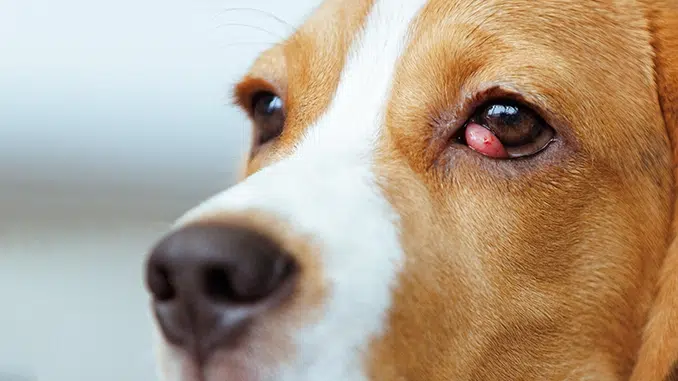
When to See a Vet
Mild tearing is common, but some signs require a closer look. Contact your veterinarian if your dog shows:
- Redness or swelling around the eyes
- Colored discharge or strong odor
- Persistent squinting or pawing
- One eye held shut
- Changes in the appearance or shape of the eye
- Suspicion of an injury, infection, ulcer or pressure-related issue like glaucoma
Your vet can examine the eye, look for scratches or growths, and prescribe appropriate medication or treatments. Learn more about when to see a vet for pet care questions.
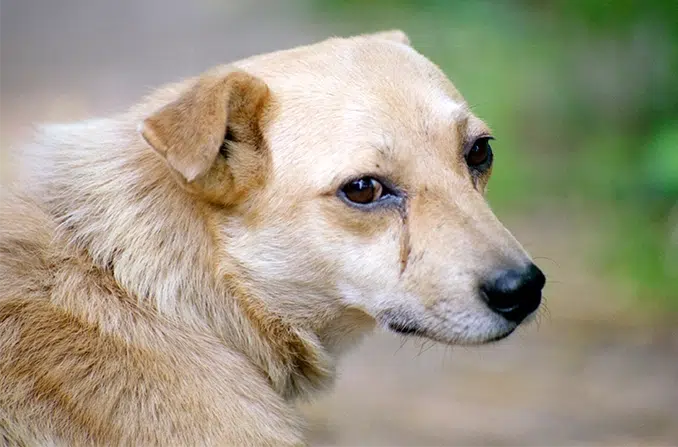
Breed-Specific Factors
Some dog breeds are more prone to watery eyes due to the shape of their face or genetic factors. Flat-faced breeds often have shallow eye sockets and tight facial folds that trap moisture. They’re also more prone to pink eye, entropion, and tear staining. Toy breeds are more likely to experience plugged tear ducts and chronic tearing.
Regular grooming around the eyes can help prevent hair from irritating sensitive areas and make it easier to spot early signs of problems.
Brachycephalic (Flat-Faced) Breeds
These dogs often have shallow eye sockets and compact facial anatomy, which can physically distort or block the tear duct openings. This makes proper tear drainage difficult, leading to overflow and tear staining. Common brachycephalic breeds prone to blocked tear ducts include:
-
Shih Tzus
-
Pugs
-
Bulldogs (French & English)
-
Pekingese
-
Lhasa Apsos
-
Boston Terriers
Toy and Small Breeds
Small breeds often have narrower tear ducts that are more easily blocked by debris, inflammation or congenital malformation. Toy breeds commonly affected include:
-
Maltese
-
Toy Poodles
-
Yorkshire Terriers
-
Chihuahuas
-
Papillons
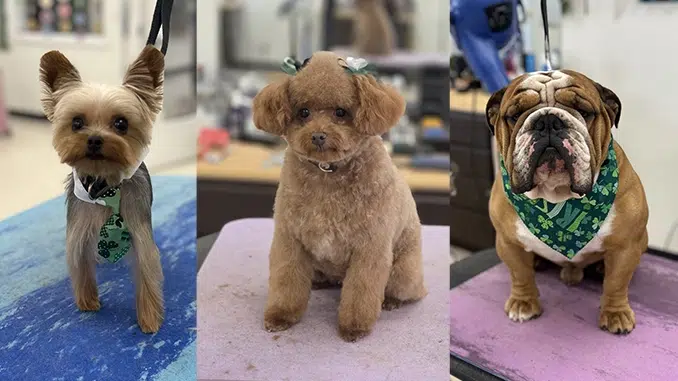
How Grooming Supports Eye Health
Clean faces, short eye-area fur and regular checks make a big difference when it comes to preventing irritation and spotting issues early. That’s where we come in.
At Smoochie Pooch, we’re here to help support your dog’s overall wellness. From coat care to facial hygiene and paw maintenance, our grooming services go beyond looking good—they play a real role in your pet’s health. A clean, well-groomed dog is easier to examine, and grooming gives us a chance to catch small issues before they become big problems.
Contact us today to learn more or book your dog’s next appointment—we’d love to help keep those eyes sparkling and healthy.
Brighten Their Eyes—Literally—with a Smoochie Pooch Facial
If your pup struggles with tear staining or discolored facial fur, a gentle facial treatment can make a noticeable difference. At Smoochie Pooch, our blueberry facial is one of our most popular grooming add-ons—not only because it smells amazing, but because it helps illuminate facial hair and reduce staining around the eyes and muzzle.
Formulated with a pH-balanced blend, our blueberry facial supports your pet’s natural skin barrier while gently cleansing buildup that can dull the fur or contribute to staining. It’s especially helpful for dogs with light-colored coats or flat faces, where tear staining is more noticeable. And as a bonus, the relaxing aromatherapeutic scent makes the bath feel like a spa day.
While blueberry is available year-round, we occasionally offer limited-edition scents like Mango Maui, Tropical Breeze, Cucumber Melon, Hotty Toddy and Harvest Apple as part of our monthly specials.
Facials are available as an add-on to our basic or complete grooming packages—not as a standalone service—but they’re a small upgrade that can make a big impact on your dog’s appearance and comfort.
If you’ve been battling tear stains or just want to brighten your pup’s adorable face, ask us about adding a facial to your next groom.
Final Thoughts
While it’s common for dogs to have watery eyes every now and then, chronic or excessive tearing might signal a health concern. From blocked tear ducts and dry eye to allergies and corneal ulcers, there are many possible causes—some simple, some serious.
With regular grooming and a watchful eye, you can help keep your pup comfortable and catch problems early. If in doubt, always check with your vet.


